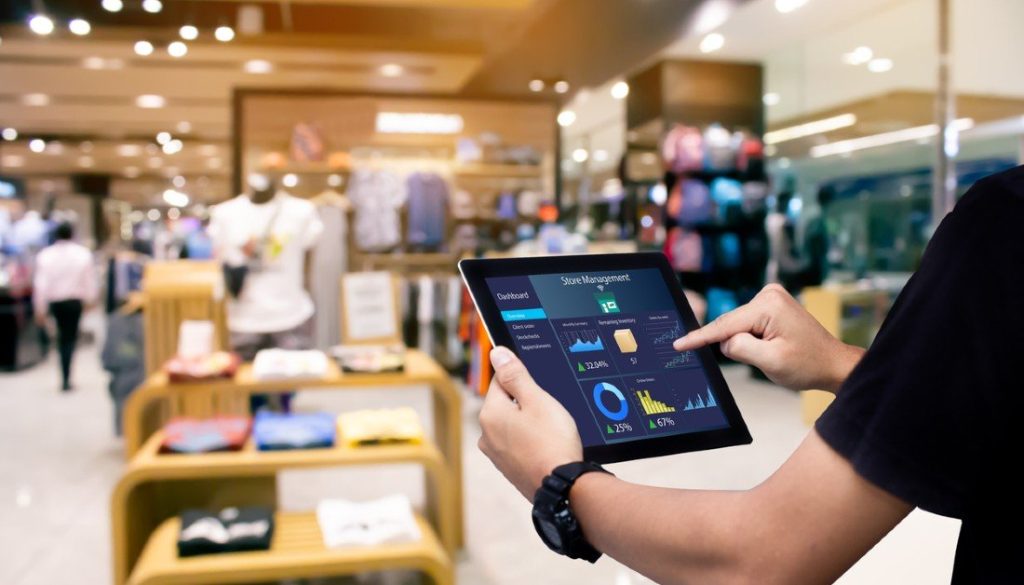The Future of Retail: How AI Transforms Consumer Behavior
Gone are the days of purely transactional shopping. Today's consumer expects seamless, intuitive, and deeply personalized experiences. Forget your wallet? Irrelevant. Want to see how that sofa looks in your living room before buying? Done. This seismic shift isn't just about convenience; it's driven by the sophisticated application of Artificial Intelligence, fundamentally altering consumer behavior and reshaping the retail landscape from browsing to fulfillment. For developers and tech innovators, understanding this transformation isn't just interesting – it's critical for building the next generation of retail tools.

From Mass Marketing to Micro-Moments: AI's Behavioral Insight Engine
Traditional retail relied on broad demographics and past purchases. AI changes the game by analyzing vast, real-time data streams:
- Real-time Behavior Tracking: AI analyzes website navigation paths, dwell times, click patterns, and even mouse movements to infer intent and friction points far more granularly than traditional analytics.
- Sentiment Analysis: Scouring social media, reviews, and customer service interactions, AI gauges brand perception, product sentiment, and emerging trends, allowing retailers to react proactively.
- Predictive Modeling: By identifying patterns across millions of interactions, AI predicts not just what a customer might buy next, but when and even why, enabling hyper-targeted outreach. Tools leveraging these capabilities are evolving rapidly, often built on platforms accessible to developers exploring Machine Learning applications.
"AI doesn't just observe behavior; it deciphers the unspoken intent behind every click, scroll, and hesitation, creating a dynamic map of consumer desire."
Personalization at Scale: The Engine Driving Loyalty
The expectation for personalization is now table stakes. AI makes it economically feasible and incredibly effective:
- Dynamic Product Recommendations: Moving beyond "users who bought this also bought…", AI systems like those used by Amazon or Netflix analyze individual behavior in context, recommending items based on current session intent, recent life events inferred from data (e.g., moving house detected via address changes), and deep affinity clusters. Open-source frameworks like TensorFlow Recommenders empower developers to build sophisticated models.
- Tailored Promotions & Content: AI segments audiences not just demographically, but behaviorally and psychographically. Discounts, email content, and homepage layouts dynamically adapt to individual profiles. Seeing 10% off dog food only if you own a dog? That's AI at work.
- Hyper-Relevant Search: AI-powered search understands semantic meaning and user context. Searching for "comfortable shoes for travel" yields fundamentally different, more relevant results than a keyword match ever could. Platforms like Algolia and Google's Retail AI solutions showcase this power.
Conversational Commerce and Immersive Experiences
AI is making interactions more natural and experiential:
- Intelligent Chatbots & Virtual Assistants: Moving beyond scripted FAQs, AI-powered chatbots (powered by LLMs like GPT-4 or Claude) handle complex inquiries, process returns, suggest products based on conversational cues, and provide 24/7 support, significantly influencing purchase decisions and reducing friction. Explore the evolution of these interfaces in our Chatbots & Virtual Assistants category.
- Visual Search & Virtual Try-On: Snap a picture of a dress you like? AI finds similar items instantly. Want to see how those glasses look on your face or how that paint color looks on your wall? Augmented Reality (AR) combined with AI makes it possible, dramatically reducing purchase hesitation. These innovations often stem from breakthroughs in Image Generation & Editing AI.
- Voice Commerce: As voice assistants mature, ordering groceries or reordering favorites via simple voice commands becomes effortless, embedding retail into daily routines.
Optimizing the Unseen: Supply Chain, Pricing, and Fraud
AI's impact extends far beyond the customer-facing front end:
- Demand Forecasting & Inventory Optimization: AI predicts demand fluctuations with unprecedented accuracy at a hyper-local level, minimizing stockouts and overstock waste. This leverages complex time-series forecasting models, a hot area for data-savvy developers.
- Dynamic Pricing: Airlines and hotels have done it for years; now retail uses AI to adjust prices in real-time based on demand, competitor pricing, inventory levels, and even weather forecasts, maximizing revenue while remaining competitive.
- Fraud Detection: AI algorithms analyze transaction patterns instantaneously to detect anomalies and prevent fraudulent purchases, protecting both the retailer and the consumer. Companies like Stripe and Adyen heavily invest in this AI.
The Developer's Playground: Building the Retail AI Future
This transformation isn't magic; it's built on code and data. Here’s where the opportunity lies for the ai-kit.site audience:
- Mastering Personalization Engines: Understanding collaborative filtering, content-based filtering, and hybrid recommendation systems (using libraries like PyTorch or TensorFlow) is invaluable. Resources on platforms like GitHub offer rich learning ground.
- Leveraging LLMs for Commerce: Integrating large language models into chatbots, product description generators, sentiment analysis tools, and personalized marketing copy is a massive frontier. Experimentation with OpenAI APIs or open-source LLMs is key.
- Building Integrated Tooling: Creating tools that help retailers easily implement AI-driven analytics, manage dynamic pricing rules, or streamline AR try-on integration addresses real pain points. Think platforms like Shopify's ecosystem but powered by deeper AI.
- Ethical Data Guardianship: With great power comes great responsibility. Developers building these systems must prioritize privacy, transparency, and bias mitigation. Frameworks like TensorFlow Privacy are emerging.
Behavior is the Blueprint
The future of retail isn't just about selling products; it's about understanding and anticipating human needs and desires with uncanny precision, facilitated by AI. Consumers are voting with their clicks and wallets for experiences that are frictionless, personalized, and responsive. This behavioral shift is permanent.
For developers, data scientists, and AI tool creators, the retail sector offers a vast, dynamic, and impactful playground. The tools needed – from sophisticated Coding Assistants to accelerate development, to powerful ML frameworks, to creative content generation engines – are increasingly accessible. The challenge? To build ethically, creatively, and relentlessly focus on solving real consumer frustrations, using AI not as a gimmick, but as the intelligent core of a fundamentally better shopping experience. The behavioral blueprint is being rewritten; the tools to build it are in your hands.